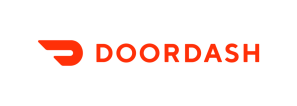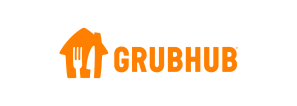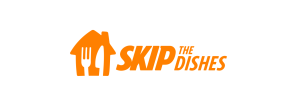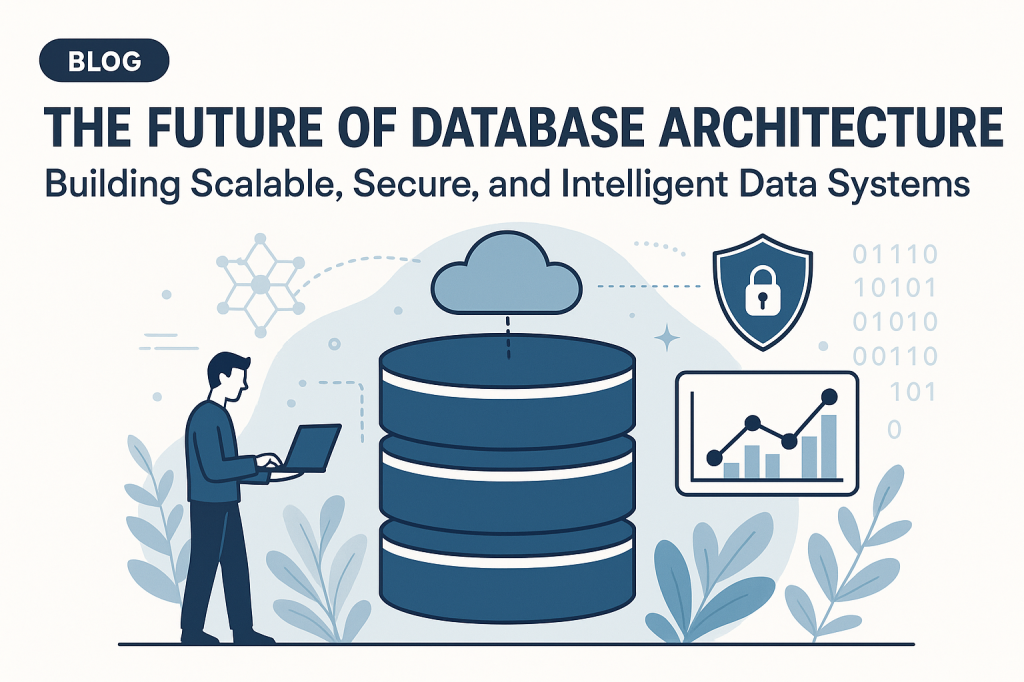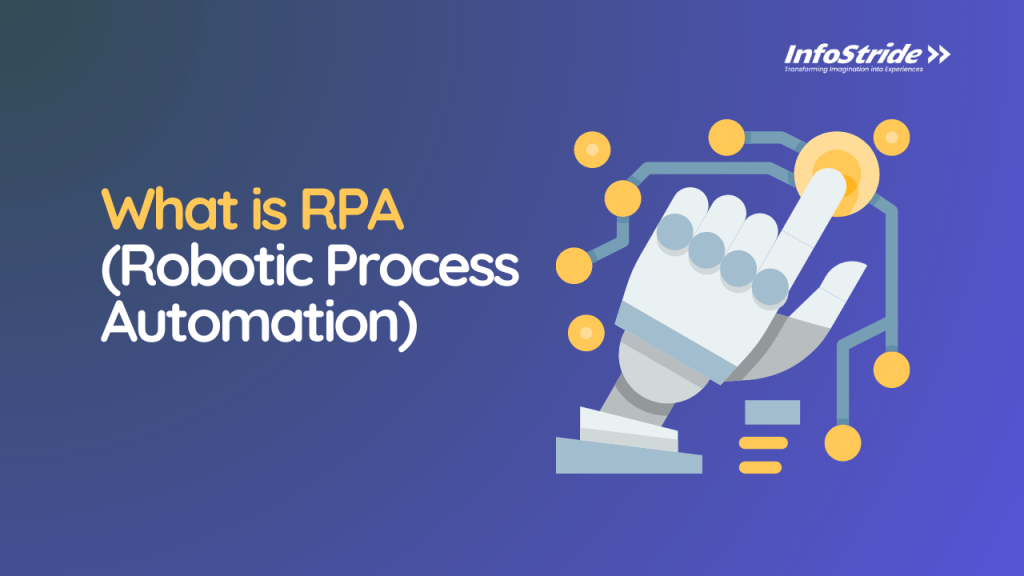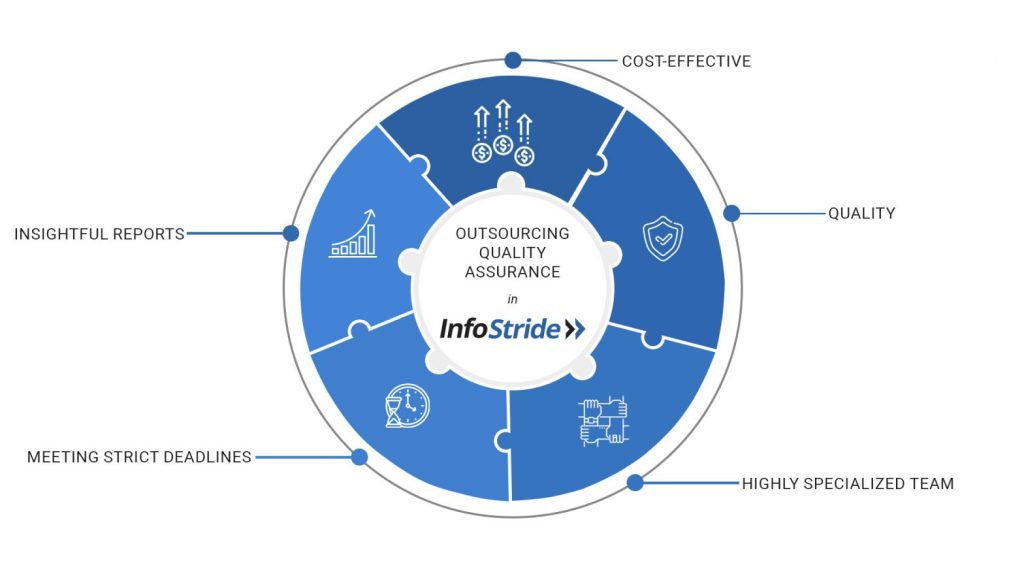“Did you know that over 60% of Americans use a food delivery app every week? As our lives become busier, food delivery apps are rapidly becoming a go-to solution for satisfying hunger without leaving the house.”
The surge in the popularity of food delivery apps has been nothing short of revolutionary, especially in recent years. With the advent of the pandemic, more people have turned to food delivery platforms as a convenient and safe way to enjoy their favorite meals from local restaurants. Whether it’s a quick lunch during a busy workday or a family dinner on a quiet evening at home, these apps have made it easier than ever to order food with just a few taps on a smartphone.
The best food delivery apps have transformed the way we think about dining, offering a wide variety of choices and seamless user experiences. From food delivery apps in the USA to international options, the industry has seen explosive growth, driven by technological advancements and changing consumer behaviors.
In this blog, we will explore the top food delivery apps that have risen to prominence in recent years. We’ll delve into their unique features, discuss why they stand out in a crowded market, and look at how they cater to diverse needs and preferences. We’ll also touch on key aspects like food delivery app development, the DoorDash business model, and the costs associated with on demand food delivery app development. If you’re a business looking to create a food delivery app, you’ll find valuable insights here.
The Evolution of Food Delivery Services
Food delivery services have come a long way from their humble beginnings. The concept of delivering meals to customers’ homes dates back to the late 19th and early 20th centuries, when restaurants in major cities began offering delivery as a convenience for their customers. In the 1950s, pizza delivery became popular in the United States, with chains like Domino’s pioneering fast delivery service.
By the 1980s and 1990s, phone-based ordering became the norm, allowing customers to call their favorite restaurants for takeout or delivery. However, the real game-changer came in the early 2000s with the advent of the internet and the first online food delivery apps. Websites like Just Eat, launched in Denmark in 2001, and Grubhub, founded in 2004 in the US, began to digitize the ordering process, making it easier for customers to browse menus and place orders online.
As smartphones became ubiquitous, the next logical step was the development of mobile food delivery apps. Apps like Uber Eats and DoorDash took advantage of GPS and mobile payment technology to offer a seamless ordering and delivery experience, which revolutionized the industry.
Technological Advancements in Food Delivery Services:

Technology has played a pivotal role in transforming food delivery services from a manual, labor-intensive process into a streamlined and efficient system. Here are some key technological advancements that have driven this transformation:
- Mobile Apps and GPS Technology: The rise of food delivery apps like DoorDash, Uber Eats, and Postmates has made ordering food more convenient than ever. GPS technology allows customers to track their orders in real time, providing transparency and reducing uncertainty.
- Payment Integration: Secure and integrated payment systems have made transactions faster and safer. With just a few taps, customers can pay for their orders using credit cards, digital wallets, or even cryptocurrencies in some cases.
- Artificial Intelligence (AI) and Machine Learning: AI and machine learning are used to optimize delivery routes, predict demand, and personalize customer experiences. For instance, apps might suggest restaurants or dishes based on past orders or popular trends in the area.
- Cloud Kitchens and Virtual Restaurants: The concept of cloud kitchens, also known as ghost kitchens, has emerged as a significant development. These are kitchens that cater exclusively to online orders without a physical dine-in presence, reducing overhead costs and allowing for greater flexibility in menu offerings.
- On-Demand Services: The on-demand economy has significantly influenced food delivery. Companies offering on-demand food delivery app development services provide platforms that connect consumers directly with local restaurants and delivery drivers, ensuring quick and efficient service.
- Data Analytics: Big data analytics helps companies understand consumer behavior, preferences, and trends. This data is crucial for improving service delivery, marketing strategies, and overall customer satisfaction.
Current Trends in the Food Delivery Landscape:
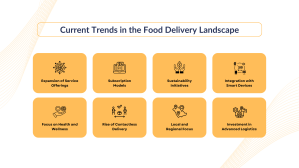
Today, the food delivery landscape is dynamic and rapidly evolving. Several key trends are shaping the future of food delivery services:
- Expansion of Service Offerings: Modern food delivery platforms are expanding beyond just restaurant deliveries to include groceries, alcohol, and even pharmaceuticals. This diversification caters to a broader range of consumer needs and boosts platform utility.
- Subscription Models: Apps like DoorDash and Uber Eats are introducing subscription services (e.g., DashPass and Eats Pass), offering benefits like free delivery and exclusive discounts. These models are designed to increase customer loyalty and retention.
- Sustainability Initiatives: There is a growing emphasis on sustainability within the food delivery industry. Companies are exploring eco-friendly packaging, carbon-neutral delivery options, and partnerships with local farms to reduce their environmental footprint.
- Integration with Smart Devices: As smart home technology becomes more prevalent, food delivery apps are integrating with devices like Amazon Echo and Google Home. This allows customers to place orders using voice commands, enhancing convenience.
- Focus on Health and Wellness: With an increasing focus on healthy eating, many apps now feature filters for dietary preferences and nutritional information. Consumers can easily find options that align with their health goals.
- Rise of Contactless Delivery: The COVID-19 pandemic has accelerated the adoption of contactless delivery options, where food is left at the doorstep. This trend is likely to continue as consumers prioritize safety and hygiene.
- Local and Regional Focus: While large platforms dominate the market, there’s a growing trend towards supporting local businesses and regional specialties. Smaller, niche apps are emerging to cater to these preferences, offering curated selections from local eateries.
- Investment in Advanced Logistics: Companies are investing in advanced logistics and delivery systems, including drones and autonomous vehicles, to improve delivery efficiency and reduce costs. These technologies hold the promise of transforming the future of delivery services.
Criteria for Selection
When selecting the top food delivery apps to feature in this blog, several key criteria were considered to ensure we highlight the most popular, user-friendly, and innovative platforms. These criteria are essential in determining which apps truly stand out in a competitive market.
1. User Base: Popularity and User Adoption
The size and activity of an app’s user base are critical indicators of its success and reliability. Here are the factors considered under this criterion:
- Number of Downloads: Apps with millions of downloads generally indicate broad appeal and a trusted reputation. Platforms like Uber Eats and DoorDash boast a vast number of downloads, reflecting their widespread acceptance and usage.
- Active User Metrics: Beyond downloads, the number of active users per month showcases how engaged the user base is. Apps with high daily or monthly active users are often more vibrant and provide quicker, more reliable services due to constant activity.
- Geographical Reach: The extent of an app’s service area is also a measure of its popularity. We looked at apps that not only dominate in their home markets but also have a significant presence in other regions. SkipTheDishes in Canada and Menulog in Australia are prime examples of regionally dominant platforms with extensive local user bases.
2. Unique Features: Standout Functionalities that Differentiate Each App
Each app has its unique set of features that distinguish it from competitors. These functionalities often cater to specific customer needs or preferences, enhancing the overall user experience. Here’s what we considered:
- User Interface and Experience: An intuitive and easy-to-navigate interface is crucial. Apps like Just Eat and Grubhub offer sleek designs and simple navigation, making it easy for users to browse menus, place orders, and track deliveries.
- Delivery Options and Speed: The variety and flexibility in delivery options are significant. Some apps provide features like scheduled deliveries, express options, and contactless delivery. Postmates, for example, is known for its rapid delivery service and wide range of delivery categories beyond just food.
- Subscription and Loyalty Programs: Many top apps offer subscription services that provide perks such as free deliveries or discounts. DoorDash’s DashPass and Uber Eats’ Eats Pass are popular choices that encourage user loyalty through value-added services.
- Integration with Other Services: Apps that integrate with other platforms or services provide added convenience. For instance, Uber Eats integrates seamlessly with the Uber ride-hailing app, allowing users to switch between food delivery and transportation services effortlessly.
- Customization and Personalization: Features that allow users to customize their orders or receive personalized recommendations based on their preferences or past orders are highly valued. AI-driven recommendations in Grubhub and Uber Eats enhance the customer experience by suggesting meals tailored to individual tastes.
3. Customer Reviews and Ratings
Customer feedback is a critical component in evaluating the performance and reliability of food delivery apps. Here’s what we examined under this criterion:
- App Store and Google Play Ratings: High ratings and positive reviews on app stores indicate user satisfaction. Apps with consistently high ratings, such as Uber Eats and DoorDash, are often more dependable and provide better service experiences.
- Review Highlights: Specific comments about what users like or dislike give deeper insights into the strengths and weaknesses of each app. Common praises or complaints can highlight areas like app performance, customer service, and delivery accuracy.
- Reputation on Review Platforms: Beyond app stores, we also looked at reviews on platforms like Yelp, Trustpilot, and Google Reviews. These reviews often provide more detailed experiences and can be a good indicator of an app’s overall reputation.
- Social Media Feedback: Customer discussions and feedback on social media platforms can also shed light on public sentiment. Apps that maintain positive engagement on platforms like Twitter or Facebook are likely to have a strong user base and good customer service.
Top Food Delivery Apps
1. DoorDash
Overview:
Founded in 2013 by Tony Xu, Stanley Tang, Andy Fang, and Evan Moore, DoorDash began as a simple mission to help local businesses with delivery services. The company, based in San Francisco, quickly grew into one of the largest food delivery platforms in the United States. Initially focused on the Bay Area, DoorDash expanded its operations rapidly across the country, becoming a household name in food delivery.
The company’s success can be attributed to its customer-centric approach and innovative technology. With its IPO in December 2020, DoorDash solidified its position as a leading player in the on-demand food delivery market. Today, DoorDash connects millions of customers with their favorite restaurants and offers a wide range of delivery options beyond just meals.
Key Features:
- Diverse Delivery Options: DoorDash provides a variety of delivery choices, from standard delivery to scheduled and express delivery options. Customers can also opt for contactless delivery, a feature that became especially popular during the COVID-19 pandemic.
- DashPass: This subscription service offers customers benefits like zero delivery fees and reduced service fees on eligible orders for a monthly fee. DashPass is particularly attractive for frequent users, providing significant savings over time.
- Extensive Partnerships: DoorDash has partnered with a vast network of restaurants, ranging from local eateries to large chains like McDonald’s and Chick-fil-A. These partnerships ensure that customers have access to a wide variety of cuisines and dining options.
- DoubleDash: An innovative feature allowing customers to add items from nearby stores (like convenience or grocery stores) to their existing food order without additional delivery fees. This adds convenience and variety to the user experience.
- DoorDash Drive: This service offers delivery solutions for businesses that need to fulfill customer orders, even if they don’t have their own delivery infrastructure. This B2B service helps DoorDash expand its reach and utility beyond just consumer-focused deliveries.
Geographical Reach:
DoorDash started in the United States but has expanded its services significantly. As of now:
- US Coverage: DoorDash operates in all 50 states and serves over 7,000 cities across the country. Its vast network ensures that even customers in smaller towns and suburban areas can enjoy the convenience of on-demand food delivery.
- International Expansion: Beyond the US, DoorDash has expanded into Canada and Australia. In Canada, it serves major cities including Toronto, Vancouver, and Montreal. In Australia, DoorDash covers key urban centers like Sydney, Melbourne, and Brisbane, competing with local giants like Menulog.
User Experience:
DoorDash consistently receives high marks for its user experience:
- App Usability: The DoorDash app is known for its user-friendly interface, which makes it easy to browse menus, place orders, and track deliveries in real time. The app’s clean design and intuitive navigation contribute to a smooth user experience.
- Customer Reviews: On platforms like the Apple App Store and Google Play, DoorDash maintains strong ratings, typically above 4 stars. Customers frequently praise the app’s reliability, the variety of restaurant options, and the quality of the delivery service.
- Customer Support: DoorDash offers robust customer support, with options for live chat, email, and phone assistance. This ensures that users can quickly resolve any issues they encounter with their orders.
Unique Selling Points (USPs):
DoorDash distinguishes itself from other food delivery apps through several unique aspects:
- Focus on Local Businesses: DoorDash has a strong emphasis on supporting local and small businesses. This approach not only helps smaller restaurants reach more customers but also provides users with a diverse range of dining options that they might not find on other platforms.
- Innovative Services: Features like DoubleDash and DoorDash Drive set DoorDash apart from competitors by offering added convenience and extended services. These innovations enhance the platform’s value to both consumers and business partners.
- Extensive Market Coverage: With a presence in nearly every corner of the US and significant international operations, DoorDash offers unparalleled geographical reach. This wide coverage ensures that users can access DoorDash services almost anywhere they go.
- Competitive Subscription Model: DoorDash provides a compelling value proposition for frequent users, helping them save money on delivery and service fees. This subscription model is a significant draw for loyal customers.
In summary, DoorDash’s blend of extensive restaurant partnerships, innovative features, and strong focus on local businesses makes it a standout in the best food delivery app category. Its commitment to user experience and continuous service expansion further solidifies its position as a top player in the food delivery platforms market.
Also Read: DoorDash Business and Revenue Model Explained
2. Uber Eats
Overview:
Launched in 2014 as an extension of the Uber ride-sharing app, Uber Eats quickly established itself as a major player in the food delivery market. The integration with Uber’s existing transportation network allowed Uber Eats to leverage a vast pool of drivers and a well-known brand to rapidly scale its operations.
Uber Eats began as a small pilot project but soon expanded to become a global phenomenon. By 2016, it had launched in over a dozen countries and was serving millions of meals worldwide. The app’s success is rooted in its seamless integration with the Uber ecosystem, providing users with the convenience of ordering food and arranging rides within the same app.
Today, Uber Eats continues to grow, capitalizing on its technology and logistics expertise to enhance its food delivery services. The platform caters to a diverse range of customers, from casual diners to corporate clients, offering everything from quick snacks to gourmet meals.
Key Features:
- In-App Functionalities: Uber Eats is designed for ease of use and efficiency. The app offers:
- Simple Navigation: A user-friendly interface that allows customers to browse menus, customize orders, and apply promotions effortlessly.
- Order Tracking: Real-time GPS tracking of deliveries, giving users up-to-the-minute updates on their orders.
- Scheduling Orders: The option to schedule orders in advance for convenient delivery at a specified time.
- Personalized Recommendations: AI-driven suggestions based on previous orders and user preferences.
- Restaurant Partnerships: Uber Eats boasts partnerships with a broad spectrum of restaurants, from local favorites to global chains. Notable collaborations include:
- Fast Food Giants: Partnerships with McDonald’s, Starbucks, and Subway provide customers with quick access to popular fast food.
- Exclusive Deals: Uber Eats frequently offers exclusive deals and promotions with partner restaurants, enhancing value for customers.
- Local Eateries: A strong focus on local and independent restaurants helps diversify the platform’s offerings, providing users with unique culinary experiences.
- Promotions and Discounts:
- Uber Eats Pass: A subscription service offering benefits such as zero delivery fees on eligible orders and discounted service fees.
- Promotional Codes: Regularly available discounts and offers that make dining more affordable for users.
- Loyalty Programs: Many restaurants on Uber Eats offer loyalty rewards and incentives, encouraging repeat business.
Geographical Reach:
Uber Eats has one of the most extensive geographical reaches among food delivery services:
- United States: It operates in all major cities and many smaller towns across the country, ensuring wide availability.
- International Presence: Uber Eats is available in over 6,000 cities across more than 45 countries, including Canada, Australia, and the UK. This global reach allows users to access the service in numerous locations worldwide.
- Market Penetration: In addition to major markets, Uber Eats has also expanded into smaller and emerging markets, enhancing its global footprint and customer base.
User Experience:
Uber Eats is consistently praised for its high-quality user experience:
- App Ratings: On both the Apple App Store and Google Play, Uber Eats enjoys high ratings, often above 4 stars. Users appreciate the app’s intuitive design, reliable performance, and comprehensive features.
- Customer Feedback: Reviews highlight the app’s convenience, the variety of available restaurants, and the efficiency of delivery services. Customers often commend the accurate order tracking and the promptness of deliveries.
- Support Services: Uber Eats offers robust customer support, including live chat, phone, and email assistance. This ensures that any issues with orders or deliveries are quickly addressed.
Unique Selling Points (USPs):
Uber Eats stands out from its competitors in several ways:
- Integration with Uber: The seamless integration with the Uber ride-sharing app provides users with a unified platform for both transportation and food delivery. This integration simplifies the user experience, making it easy to switch between services.
- Global Reach and Brand Recognition: As part of the Uber family, Uber Eats benefits from strong brand recognition and a well-established global network. This gives it a competitive edge in both existing and new markets.
- Advanced Technology: Uber Eats leverages advanced technologies, including AI for personalized recommendations and real-time tracking. These technologies enhance the overall user experience and operational efficiency.
- Extensive Delivery Network: The app’s reliance on Uber’s vast network of drivers allows for quick and efficient deliveries, even during peak times. This extensive network also supports the app’s ability to scale rapidly in new locations.
- Diverse and Inclusive Offerings: Uber Eats provides a wide range of dining options, catering to different tastes, dietary requirements, and price points. This inclusivity ensures that there is something for everyone on the platform.
In summary, Uber Eats’ combination of robust technology, global reach, and seamless integration with the Uber ecosystem makes it one of the best food delivery apps available today. Its diverse restaurant partnerships, innovative features, and commitment to user convenience set it apart in the competitive landscape of food delivery platforms.
Also Read: How to Build an App Like Uber Eats? A Comprehensive Outlook
3. Grubhub
Overview:
Grubhub was founded in 2004 by Matt Maloney and Mike Evans as a web-based platform to connect hungry customers with local restaurants. What started as a simple solution to find and order food online has grown into one of the leading food delivery services in the United States. Grubhub’s early focus on aggregating menus and providing a streamlined ordering process allowed it to quickly gain traction in the burgeoning online food delivery market.
By 2013, Grubhub had merged with Seamless, another major player in the online food ordering space, further solidifying its market position. This merger enabled Grubhub to expand its reach and capabilities significantly. Today, Grubhub operates as a subsidiary of Just Eat Takeaway, an international food delivery giant, enhancing its resources and global presence.
Grubhub’s growth trajectory has been marked by continuous innovation and a commitment to improving both the user experience and operational efficiency. Its platform now supports millions of users and partners with over 300,000 restaurants across the US.
Key Features:
Simple and Intuitive Ordering Process: Grubhub’s platform is designed for ease of use. Key elements include:
- User-Friendly Interface: The app and website are structured to allow users to quickly search for restaurants, browse menus, and place orders with minimal hassle.
- Customizable Orders: Users can easily modify their orders to accommodate dietary preferences, special instructions, and other customizations.
Advanced Delivery Tracking:
- Real-Time GPS Tracking: Customers can monitor their delivery in real time, from the moment the order is placed until it arrives at their doorstep.
- ETA Notifications: Users receive updates on the estimated time of arrival, helping them manage their expectations and plan accordingly.
Flexible Payment Options:
- Multiple Payment Methods: Grubhub supports a variety of payment options, including credit and debit cards, PayPal, Apple Pay, and Google Pay, providing users with convenient and secure ways to pay.
- Grubhub Gift Cards: The platform also offers gift cards that can be used for purchases, making it a popular choice for gifts and promotions.
Perks and Promotions:
- Grubhub+: A subscription service offering benefits such as unlimited free delivery on eligible orders and exclusive member discounts.
- Special Deals and Rewards: Grubhub frequently features promotions and discounts through its app, as well as loyalty rewards programs that encourage repeat business.
Geographical Reach:
- United States: Grubhub’s primary market is the US, where it operates in more than 4,000 cities and towns. Its extensive network includes major metropolitan areas as well as smaller communities, ensuring wide accessibility across the country.
- Partnership with Seamless: In addition to its own brand, Grubhub also operates under the Seamless brand, particularly in regions like New York City where Seamless has a strong historical presence. This dual branding strategy helps Grubhub cater to a diverse customer base.
- International Expansion: Although Grubhub’s primary focus remains on the US market, its parent company, Just Eat Takeaway, provides it with access to resources and expertise for potential international ventures. This relationship could facilitate future expansions beyond North America.
User Experience:
Grubhub is well-regarded for its commitment to providing a positive user experience:
- High Ratings and Positive Reviews: On platforms like the Apple App Store and Google Play, Grubhub consistently receives high ratings, often above 4 stars. Users appreciate the platform’s ease of use, reliable service, and the wide selection of restaurants.
- Customer Feedback: Common themes in user reviews highlight Grubhub’s efficient delivery process, friendly customer service, and the convenience of its ordering system. However, some users have noted issues with delivery times and accuracy, which the company continually works to address.
- Customer Support: Grubhub offers comprehensive customer support options, including live chat, phone, and email assistance. This commitment to resolving issues and maintaining customer satisfaction is a key factor in its success.
Unique Selling Points (USPs):
Grubhub stands out in the competitive food delivery market due to several distinctive features:
- Focus on Local Restaurants: Grubhub has a strong emphasis on supporting local and independent restaurants. This approach not only diversifies the platform’s offerings but also fosters a sense of community and supports small business growth.
- Comprehensive Loyalty Programs: Through initiatives like Grubhub+ and various rewards programs, Grubhub incentivizes repeat business and builds customer loyalty. These programs offer tangible benefits that enhance user engagement and satisfaction.
- Strong Market Presence: With deep roots in the US market and a significant presence in key regions, Grubhub has built a robust network of restaurant partnerships and a loyal customer base. Its merger with Seamless and the backing of Just Eat Takeaway further strengthen its market position.
- Innovative Technology: Grubhub continuously invests in technology to improve the ordering and delivery experience. Features like real-time tracking and flexible payment options reflect the company’s commitment to leveraging technology to meet customer needs.
- Tailored Corporate Solutions: Grubhub offers specialized services for corporate clients, including office catering and group orders. This focus on business solutions helps Grubhub cater to a broader range of customers and use cases.
In summary, Grubhub’s blend of user-friendly technology, extensive restaurant partnerships, and strong market presence makes it a leading contender among top food delivery apps. Its focus on local businesses, innovative features, and comprehensive customer loyalty programs provide a competitive edge in the best food delivery app landscape.
4. Postmates
Overview:
Postmates was founded in 2011 by Bastian Lehmann, Sean Plaice, and Sam Street in San Francisco. Initially conceived as a platform to deliver anything, anytime, Postmates revolutionized the on-demand delivery landscape by focusing on delivering not just food but also groceries, alcohol, and retail items. This broad service offering set Postmates apart from other early food delivery apps.
The company quickly grew in popularity due to its versatility and convenience, catering to a growing demand for fast, reliable delivery services. By 2015, Postmates had expanded its operations to over 100 metropolitan areas in the US, becoming a vital part of the gig economy and offering a flexible work option for thousands of couriers.
In 2020, Postmates was acquired by Uber Technologies for $2.65 billion, integrating it into the Uber Eats platform while maintaining its unique brand identity. This acquisition allowed Uber to strengthen its position in the competitive food delivery market and leverage Postmates’ extensive delivery network.
Key Features:
Wide Range of Delivery Options: Postmates is known for its diverse delivery capabilities:
- Anything, Anytime: Postmates can deliver a wide variety of goods, including meals from local restaurants, groceries, alcohol, and retail items. This flexibility makes it a go-to app for more than just food delivery.
- Instant Delivery: The platform offers rapid delivery services, often promising delivery within an hour, depending on the location and item.
- Scheduled Deliveries: Users can schedule deliveries in advance, making it convenient for planning meals or receiving items at a specific time.
Service Areas:
- Variety of Stores: Beyond restaurants, Postmates partners with grocery stores, liquor stores, and retail outlets, providing a one-stop solution for diverse delivery needs.
- Fleet Flexibility: The app’s network of independent couriers allows for a high degree of flexibility and scalability, adapting quickly to meet demand in various service areas.
Promotions and Subscription Services:
- Postmates Unlimited: A subscription service offering benefits like free delivery on orders over a certain amount and exclusive promotions. This is similar to Uber Eats’ Eats Pass but specifically tailored for Postmates’ diverse delivery offerings.
- Discount Codes and Special Offers: Regular promotions and discounts are available, making it more affordable for users to utilize the service frequently.
Geographical Reach:
- Major US Markets: Postmates operates in over 4,200 cities across the United States, including all major metropolitan areas such as New York, Los Angeles, Chicago, and Miami. This extensive reach ensures that it serves a broad user base, from urban centers to suburban communities.
- Growth and Expansion: Since its acquisition by Uber, Postmates has continued to expand its footprint, integrating its services more closely with the Uber Eats platform. This integration allows it to leverage Uber’s global network, potentially paving the way for international expansion in the future.
- Niche and Suburban Areas: Postmates has made significant inroads into smaller and niche markets, providing delivery options in areas that might not be as well-served by other major food delivery apps. This broad service area highlights its commitment to accessibility and convenience for all users.
User Experience:
Postmates is praised for its user-centric approach and the quality of its delivery services:
Customer Feedback:
- App Store Ratings: On both the Apple App Store and Google Play, Postmates receives favorable reviews, often highlighted for its reliability and wide range of delivery options.
- Service Quality: Users appreciate the speed and efficiency of Postmates’ delivery services, as well as the ease of navigating the app and placing orders.
Customer Support: Postmates offers robust support through in-app messaging, email, and phone. This ensures that any issues or concerns can be quickly addressed, enhancing the overall user experience.
User Interface and Experience:
- Intuitive Design: The Postmates app features a clean and intuitive design, making it easy for users to find what they need and place orders quickly.
- Real-Time Tracking: Similar to other leading apps, Postmates provides real-time tracking of deliveries, allowing customers to monitor the progress of their orders closely.
Unique Selling Points (USPs):
Postmates differentiates itself in several key ways:
- Versatility and Range of Services: Postmates’ ability to deliver a wide variety of items, from meals to groceries to retail products, sets it apart from other food delivery services that primarily focus on restaurant orders. This broad service offering makes Postmates a versatile choice for many delivery needs.
- Rapid Delivery: The platform’s emphasis on quick and efficient delivery, often within an hour, appeals to users seeking fast service. This speed is particularly valued for urgent needs or last-minute orders.
- Flexible Scheduling: Postmates’ feature allowing users to schedule deliveries in advance provides added convenience, catering to those who plan their orders ahead of time. This flexibility is especially useful for managing busy schedules.
- Postmates Unlimited: The subscription service offers significant savings and exclusive benefits, making it an attractive option for regular users. The combination of free delivery and special promotions under this service adds substantial value.
- Strong Integration with Uber: As part of the Uber family, Postmates benefits from the extensive logistics and technology infrastructure of its parent company. This integration enhances its operational capabilities and broadens its service reach, providing a seamless experience for users of both Postmates and Uber Eats.
In summary, Postmates’ broad delivery capabilities, rapid service, and strong user focus make it a standout in the best food delivery app category. Its unique ability to deliver a wide range of products and its integration with Uber’s powerful network provide a competitive edge in the food delivery platforms market.
5. Just Eat
Overview:
Just Eat was founded in Denmark in 2001 by Jesper Buch, but it found its major success after moving its headquarters to the UK in 2006. Since then, Just Eat has become a dominant force in the food delivery market, especially in the UK and Europe. The company has grown significantly through strategic acquisitions and partnerships, merging with other key players like Takeaway.com in 2020 to form Just Eat Takeaway, one of the largest online food delivery companies globally.
Just Eat’s business model initially focused on providing a platform for local restaurants to receive and manage orders, leveraging the internet to connect customers with a diverse range of dining options. Unlike many competitors that manage their own delivery fleets, Just Eat traditionally relied on restaurants to handle their deliveries. This approach allowed it to rapidly expand its restaurant network and customer base.
In recent years, Just Eat has adapted to changing market dynamics by incorporating its own delivery services in many areas, thus offering greater flexibility and convenience to both restaurants and customers.
Key Features:
User-Friendly Interface: Just Eat’s platform is designed to be intuitive and accessible:
- Easy Navigation: The app and website feature a straightforward layout, allowing users to search for restaurants by cuisine, location, or name. The menu displays and ordering process are clear and simple.
- Personalized Recommendations: The platform provides tailored suggestions based on user preferences and past orders, enhancing the browsing experience.
- Order Management: Customers can track their orders in real time and receive updates on the delivery status, ensuring transparency and reliability.
Extensive Restaurant Network:
- Local and International Cuisines: Just Eat partners with a wide range of restaurants, from local takeaways to well-known chains, offering a diverse selection of cuisines to suit various tastes and dietary requirements.
- Exclusive Partnerships: The platform often features exclusive deals and promotions with popular restaurant brands, providing added value to customers.
- Independent Restaurants: Just Eat has a strong focus on supporting local and independent eateries, giving smaller businesses a platform to reach a larger audience.
Flexible Ordering System:
- Multiple Payment Options: Just Eat supports various payment methods, including credit and debit cards, PayPal, and vouchers, making it convenient for users to complete their transactions.
- Scheduled Orders: Users can place orders for immediate delivery or schedule them for later, offering flexibility and convenience for planned meals.
- Group Orders: The platform allows for group ordering, making it easy for users to coordinate and split orders with friends, family, or colleagues.
Geographical Reach:
- United Kingdom: Just Eat is a market leader in the UK, serving millions of customers across the country. It operates in virtually every city and town, making it one of the most accessible and widely used food delivery services in the region.
- International Markets: Just Eat has a strong presence in Europe, Canada, Australia, and several other regions. Its merger with Takeaway.com expanded its footprint significantly, allowing it to serve customers in over 20 countries worldwide.
Europe: Just Eat is a major player in countries like Denmark, Ireland, Spain, Italy, and France.
Canada and Australia: It operates under the Just Eat brand in Canada and Australia, offering a similar range of services and restaurant options.
- Strategic Growth: Through mergers and acquisitions, Just Eat continues to expand its market presence and capabilities. The company’s strategic growth approach has positioned it as a leading player in both established and emerging markets.
User Experience:
Just Eat is highly rated by users for its reliability, variety, and ease of use:
App and Website Reviews:
- Consistent High Ratings: On platforms like the Apple App Store and Google Play, Just Eat consistently receives positive feedback, with ratings typically above 4 stars. Users appreciate the platform’s simplicity, the breadth of restaurant options, and the quality of service.
- Customer Testimonials: Reviews often highlight the convenience of Just Eat’s ordering process, the timely delivery of orders, and the responsiveness of customer support.
Customer Service: Just Eat provides comprehensive customer support through various channels, including in-app messaging, phone, and email. This ensures that users can easily resolve any issues they encounter with their orders.
Responsive Platform: The Just Eat app and website are optimized for performance, offering fast load times and a smooth browsing experience. This reliability is crucial for maintaining user satisfaction, especially during peak ordering times.
Unique Selling Points (USPs):
Just Eat stands out in the competitive food delivery market due to several distinctive qualities:
- Strong Local Presence: Just Eat’s deep integration with local communities and its support for independent restaurants give it a unique position in the market. This focus on local eateries provides customers with access to a diverse range of food options and helps boost the visibility of small businesses.
- Flexible Delivery Options: Unlike many competitors that operate their own delivery fleets, Just Eat’s model often allows restaurants to manage their own deliveries. This flexibility can lead to faster and more efficient service, as restaurants can directly control the delivery process.
- Extensive Market Reach: With a broad geographical presence, Just Eat is accessible to a wide range of customers across different regions and countries. Its ability to cater to both densely populated urban areas and smaller towns enhances its appeal to a diverse user base.
- Comprehensive Platform: Just Eat’s platform is not just a food delivery service but also a comprehensive ordering system for a variety of cuisines and meal types. This versatility attracts a wide array of users, from those seeking quick takeaways to those looking for gourmet dining experiences.
- Strong Brand Recognition: Just Eat’s long-standing presence and extensive marketing campaigns have built strong brand recognition and loyalty. The company is well-known for its catchy advertising, including the popular “Did Somebody Say Just Eat?” slogan, which has become synonymous with food delivery in many markets.
In summary, Just Eat’s robust network, user-friendly platform, and commitment to supporting local businesses make it a leader among top food delivery apps. Its flexible delivery model, broad market reach, and distinctive brand identity provide a competitive edge in the food delivery platforms market.
6. SkipTheDishes
Overview:
SkipTheDishes was founded in 2012 by brothers Josh and Chris Simair in Saskatoon, Saskatchewan, Canada. Initially starting as a regional player, SkipTheDishes quickly expanded its operations across Canada, leveraging its user-friendly platform and efficient delivery network to become a dominant force in the Canadian food delivery market. The company’s mission to make food delivery accessible and convenient has driven its rapid growth and widespread adoption.
In 2016, SkipTheDishes was acquired by Just Eat, a strategic move that provided it with the resources and expertise to enhance its services and expand further. Despite this acquisition, SkipTheDishes continues to operate under its own brand, maintaining a strong Canadian identity while benefiting from the backing of a global food delivery giant.
SkipTheDishes has built its reputation on providing reliable and timely delivery services, as well as offering a broad selection of restaurant options to cater to diverse customer preferences. Its success in Canada has laid the foundation for potential expansion into other markets, particularly in North America.
Key Features:
Comprehensive App Functionalities: SkipTheDishes offers a robust and feature-rich app that enhances the ordering experience.
- Easy Ordering Process: Users can browse through a vast array of restaurants and cuisines, customize their orders, and place them with just a few taps.
- Real-Time Order Tracking: The app provides real-time tracking from the moment the order is placed until it reaches the customer’s door. This transparency helps users stay informed about their delivery status.
- Rating and Review System: Customers can rate their orders and leave reviews, providing valuable feedback to both SkipTheDishes and the restaurants. This system helps maintain high service standards.
Efficient Delivery Processes:
- Independent Courier Network: SkipTheDishes utilizes a network of independent couriers, known as “Skippers,” who handle the delivery process. This approach allows for flexible and scalable delivery operations.
- Advanced Logistics: The platform employs sophisticated algorithms to optimize delivery routes and reduce wait times, ensuring that food arrives fresh and on time.
- Contactless Delivery Options: In response to changing customer needs and health considerations, SkipTheDishes offers contactless delivery options, allowing for safer and more convenient transactions.
Transparent Fees:
- Delivery Fees: The app clearly displays delivery fees, which can vary depending on factors such as the distance between the restaurant and the customer and the time of day. This transparency helps users make informed decisions.
- Service Fees: SkipTheDishes charges a service fee on each order, which covers operational costs and platform maintenance. The exact fee amount is communicated during the checkout process.
- Subscription Service: SkipTheDishes offers a subscription service called Skip Express Lane, which provides free delivery on eligible orders and other exclusive benefits. This option is ideal for frequent users looking to save on delivery costs.
Geographical Reach:
- Canada: SkipTheDishes is the leading food delivery service in Canada, operating in every major city and many smaller towns. Its extensive network spans coast to coast, making it accessible to a wide range of customers across the country. Key cities include Toronto, Vancouver, Calgary, Montreal, and Winnipeg.
- Expansion Beyond Canada: While its core operations remain in Canada, SkipTheDishes has explored opportunities for expansion into other markets, particularly within North America. The company’s integration with Just Eat provides a potential pathway for international growth and the sharing of best practices from global operations.
- Targeted Growth Strategy: SkipTheDishes continues to focus on strengthening its presence in existing markets while exploring strategic opportunities for further expansion. Its growth strategy emphasizes leveraging local partnerships and adapting services to meet regional needs.
User Experience:
SkipTheDishes is well-regarded for its customer-centric approach and commitment to delivering high-quality service:
Positive Customer Feedback:
- High App Store Ratings: The SkipTheDishes app is highly rated on both the Apple App Store and Google Play, with users praising its ease of use, reliable service, and extensive restaurant selection.
- Consistent Quality: Reviews often highlight the consistency and quality of SkipTheDishes’ delivery services. Users appreciate the platform’s reliability and the wide variety of food options available.
User-Friendly Interface:
- Clean Design: The app’s clean and intuitive design makes it easy for users to find their favorite restaurants, customize their orders, and track deliveries. This user-friendly approach enhances overall satisfaction.
- Personalized Recommendations: SkipTheDishes provides personalized restaurant and menu recommendations based on user preferences and past orders, making it easier for customers to discover new dining options.
- Responsive Customer Support: SkipTheDishes offers robust customer support, including live chat, phone, and email assistance. This commitment to resolving issues quickly and effectively contributes to its high customer satisfaction rates.
Unique Selling Points (USPs):
SkipTheDishes differentiates itself in the competitive food delivery market through several unique aspects:
- Strong Canadian Presence: As a leading food delivery service in Canada, SkipTheDishes has deep-rooted connections with local communities and a thorough understanding of Canadian market dynamics. This local expertise helps it cater effectively to the preferences and needs of Canadian customers.
- Broad Selection of Restaurants: SkipTheDishes partners with a diverse range of restaurants, from popular chains to local favorites, offering customers a wide array of dining choices. This extensive network ensures that users can find something to suit every taste and occasion.
- Commitment to Innovation: SkipTheDishes continually invests in technology and innovation to enhance its service offerings. Features like real-time tracking, personalized recommendations, and contactless delivery reflect its commitment to providing a modern and convenient food delivery experience.
- Flexible Delivery Options: The use of an independent courier network allows SkipTheDishes to offer flexible and scalable delivery services. This model enables the company to quickly adapt to changing demand and maintain high service levels across different regions.
- Localized Marketing and Promotions: SkipTheDishes leverages localized marketing campaigns and promotions to engage with its customer base and drive loyalty. These targeted initiatives help the company resonate with local audiences and build a strong brand presence.
In summary, SkipTheDishes’ dominant position in the Canadian market, extensive restaurant network, and focus on delivering a seamless user experience make it a top contender among best food delivery apps. Its unique blend of local expertise, innovative features, and customer-centric approach provides a significant edge in the food delivery platforms landscape.
7. Menulog
Overview:
Menulog is a prominent food delivery service based in Australia and New Zealand, widely recognized as a market leader in these regions. Founded in 2006 by Leon Kamenev and Dan Katz, Menulog has established itself as a household name for online food ordering. It initially focused on providing a platform for customers to place takeaway orders from local restaurants, but has since evolved into a comprehensive delivery service.
Menulog’s success is built on its extensive restaurant network, user-friendly platform, and commitment to delivering high-quality service. In 2015, the company was acquired by Just Eat, further solidifying its position in the competitive food delivery market and enabling it to benefit from the resources and expertise of a global leader.
With a strong presence in major Australian cities and significant growth in New Zealand, Menulog continues to expand its service offerings and enhance the user experience, maintaining its status as a go-to app for food delivery in the region.
Key Features:
Seamless Ordering Experience: Menulog offers a straightforward and enjoyable ordering process:
- Intuitive App and Website: Both the Menulog app and website are designed with ease of use in mind, allowing customers to quickly browse menus, customize their orders, and place them with minimal effort.
- Real-Time Order Tracking: Users can track their orders in real-time from preparation to delivery, providing transparency and peace of mind.
- Multiple Payment Options: Menulog supports various payment methods, including credit and debit cards, PayPal, and Apple Pay, ensuring a smooth and secure checkout process.
Extensive Restaurant Variety:
- Diverse Cuisine Options: Menulog partners with a vast array of restaurants, from local favorites to international chains, offering a wide range of cuisines to cater to different tastes and dietary preferences.
- Exclusive Deals and Promotions: The platform frequently features exclusive deals, discounts, and promotions, providing customers with great value and encouraging them to explore new dining options.
- Local and Chain Restaurants: Menulog’s network includes both local eateries and well-known chains, giving customers a broad selection to choose from, whether they are in the mood for a unique local dish or a familiar favorite.
Promotions and Discounts: Menulog regularly offers promotions and discounts to attract and retain customers:
- Special Offers: The platform provides a variety of special offers, including discounts on first-time orders, deals for repeat customers, and holiday promotions.
- Loyalty Programs: Menulog has introduced loyalty programs and reward systems, allowing frequent users to earn points or receive benefits for their continued patronage.
- Seasonal and Event-Based Promotions: The app often features promotions tied to seasonal events, local festivals, or major sporting events, engaging users with timely and relevant offers.
Geographical Reach:
- Australia: Menulog dominates the Australian food delivery market, serving millions of customers across the country. Its operations cover all major cities, including Sydney, Melbourne, Brisbane, and Perth, as well as many regional and suburban areas. This extensive coverage makes Menulog one of the most accessible food delivery services in Australia.
- New Zealand: Menulog has also established a strong presence in New Zealand, providing delivery services in major urban centers like Auckland, Wellington, and Christchurch. The company continues to expand its reach within the country, bringing its extensive restaurant network and reliable service to more customers.
- Strategic Expansion: While its primary focus remains on Australia and New Zealand, Menulog’s integration with Just Eat opens up potential avenues for further growth and expansion into other markets. The company’s ability to leverage Just Eat’s global network could facilitate future market entries or enhancements.
User Experience:
Menulog is highly regarded for its user-centric approach and quality service:
Positive User Feedback:
- High Ratings: Menulog consistently receives high ratings on the Apple App Store and Google Play, with users praising the app’s ease of use, extensive restaurant choices, and timely deliveries.
- Customer Testimonials: Reviews often highlight Menulog’s reliable service, the variety of food options, and the value provided by frequent promotions and discounts.
Responsive Customer Service: Menulog offers comprehensive customer support through various channels, including in-app messaging, phone, and email. The platform is known for its responsive and helpful customer service team, which ensures that any issues are promptly addressed.
User-Friendly Interface:
- Simple Navigation: The Menulog app and website are designed to be user-friendly, with intuitive navigation and clear, detailed menus. This simplicity makes it easy for customers to find their desired dishes and place orders quickly.
- Personalized Recommendations: Menulog provides personalized recommendations based on user preferences and past orders, enhancing the browsing experience and helping customers discover new restaurants and meals.
Unique Selling Points (USPs):
Menulog stands out in the food delivery market due to several unique attributes:
- Strong Local Integration: Menulog’s deep connection with local communities and its extensive network of local restaurants give it a unique position in the Australian and New Zealand markets. This local focus allows Menulog to offer a wide variety of dining options and support local businesses effectively.
- Comprehensive Restaurant Network: With thousands of partner restaurants, Menulog provides an unparalleled selection of food choices. This extensive network includes everything from gourmet dining and specialty cuisines to quick takeaways and family favorites, catering to a diverse customer base.
- Innovative Service Features: Menulog continually enhances its service with innovative features, such as real-time tracking, contactless delivery, and personalized recommendations. These enhancements ensure that the platform meets the evolving needs and preferences of its users.
- Engaging Promotions and Rewards: Menulog’s commitment to providing value through regular promotions, discounts, and loyalty programs helps attract and retain customers. These initiatives not only make dining more affordable but also encourage users to explore and enjoy new culinary experiences.
- Integration with Just Eat: As part of the Just Eat family, Menulog benefits from the global resources, expertise, and technological advancements of its parent company. This integration strengthens Menulog’s operational capabilities and positions it for continued growth and success in the competitive food delivery market.
In summary, Menulog’s dominant presence in Australia and New Zealand, extensive restaurant variety, and focus on delivering a seamless user experience make it a standout among top food delivery apps. Its innovative features, strong local integration, and commitment to customer satisfaction provide a significant edge in the food delivery platforms market.
Emerging Players and Market Disruptors
The food delivery industry is continuously evolving, with new entrants and innovative startups disrupting the market and challenging established players. These emerging platforms often introduce groundbreaking features and unique business models that cater to niche markets or address specific customer needs. Here, we explore some of the rising stars in the food delivery space, their innovative offerings, and the potential impact they could have on the competitive landscape.
New Entrants in the Food Delivery Market:
1. ChowNow:

Overview: ChowNow, founded in 2011 and based in Los Angeles, focuses on empowering local restaurants by providing them with branded online ordering systems and marketing tools. Unlike traditional delivery platforms that charge high commissions, ChowNow offers a more sustainable, flat-fee pricing model, making it an attractive option for small and independent eateries.
Innovative Features:
- Customizable Ordering System: Restaurants can create their own branded apps and websites for online orders, retaining control over their customer experience.
- No Commission Fees: ChowNow’s flat-fee subscription model is cost-effective, allowing restaurants to keep more of their profits.
- Direct-to-Consumer Marketing: The platform provides marketing support, helping restaurants build their brand and customer base without relying on third-party apps.
Potential Impact: By focusing on the needs of small businesses, ChowNow is challenging the high-commission model of traditional delivery services and promoting a more restaurant-friendly approach. This could lead to a shift in how local eateries choose to engage with delivery platforms, potentially reducing their dependence on larger, commission-based providers.
2. Caviar:

Overview: Acquired by DoorDash in 2019, Caviar initially started as a premium food delivery service catering to upscale and trendy restaurants that often weren’t available on other platforms. It focuses on delivering high-quality dining experiences from top-rated local restaurants.
Innovative Features:
- Curated Restaurant Selection: Caviar partners with top-tier restaurants, offering customers access to gourmet meals and exclusive dining options.
- Enhanced Delivery Experience: The platform emphasizes a premium service with high attention to detail, from packaging to delivery.
- Scheduled Deliveries: Customers can schedule their deliveries up to a week in advance, allowing for better planning and convenience.
Potential Impact: Caviar’s focus on premium and exclusive dining experiences sets it apart from mass-market delivery apps. Its integration with DoorDash could see these high-end features influencing broader service offerings, elevating the standard of delivery experiences across the market.
3. GoPuff:

Overview: Founded in 2013 and headquartered in Philadelphia, GoPuff operates a unique model combining convenience store items with food delivery. Unlike traditional platforms that rely on restaurant partnerships, GoPuff owns and operates micro-fulfillment centers, enabling rapid delivery of a wide range of products, from snacks and beverages to household essentials.
Innovative Features:
- Centralized Fulfillment: GoPuff’s network of warehouses allows for fast, on-demand delivery of a variety of items, often within 30 minutes.
- 24/7 Availability: Many GoPuff locations operate around the clock, catering to late-night and early-morning delivery needs.
- Flat Delivery Fee: The platform offers a consistent delivery fee regardless of the order size, making it predictable and straightforward for customers.
Potential Impact: GoPuff’s model blurs the lines between food delivery and retail, potentially redefining consumer expectations for on-demand services. Its rapid delivery and extensive product range could push traditional food delivery apps to expand their offerings and improve delivery times to stay competitive.
4. Ritual:

Overview: Launched in Toronto in 2014, Ritual focuses on streamlining the pick-up experience for urban professionals. The app allows users to order ahead from their favorite local spots and skip the line when they arrive, combining the convenience of mobile ordering with the efficiency of pick-up.
Innovative Features:
- Order Ahead and Pick-Up: Customers can order and pay through the app, receiving a notification when their order is ready for pick-up.
- Social Ordering: Ritual’s “Piggyback” feature allows users to combine their orders with colleagues or friends for a group pick-up, fostering a sense of community and shared convenience.
- Rewards Program: Users earn rewards points with each purchase, which can be redeemed for discounts and promotions.
Potential Impact: Ritual’s emphasis on pick-up rather than delivery offers an alternative to traditional food delivery services, particularly in densely populated urban areas. Its focus on convenience and social engagement could inspire other platforms to enhance their pick-up options and loyalty programs.
Innovative Features:
1. AI-Powered Personalization: Many emerging apps are leveraging artificial intelligence to provide highly personalized experiences:
- Predictive Ordering: AI algorithms analyze user behavior to predict preferred meals and suggest orders based on previous purchases and time of day.
- Dynamic Pricing: Some platforms use AI to adjust pricing dynamically based on demand, helping balance order volumes and reduce delivery times.
2. Sustainability Initiatives: Environmental concerns are driving innovations focused on sustainability:
- Eco-Friendly Packaging: New entrants are prioritizing sustainable packaging solutions, using biodegradable or recyclable materials to reduce waste.
- Carbon Offsetting: Some apps are integrating carbon offset options, allowing customers to contribute to environmental projects to mitigate the impact of their deliveries.
3. Enhanced Delivery Technologies: Advances in technology are improving delivery efficiency and customer experience:
- Drones and Autonomous Vehicles: Experimental delivery methods like drones and self-driving vehicles are being tested to speed up delivery times and reduce operational costs.
- Smart Delivery Solutions: Innovations such as temperature-controlled compartments and smart lockers ensure food remains fresh and secure during delivery.
Potential Impact:
1. Changing Competitive Dynamics: These emerging players and their innovative features are likely to drive significant changes in the food delivery landscape:
- Niche Focus: Platforms like ChowNow and Ritual highlight the growing importance of niche markets and specialized services, prompting larger players to diversify their offerings.
- Sustainability Pressure: As consumer demand for environmentally friendly options increases, traditional food delivery companies may need to adopt more sustainable practices to remain competitive.
- Technological Advancements: The push towards AI, automation, and advanced delivery technologies will set new standards for efficiency and customer experience, forcing established platforms to innovate and adapt.
2. Customer Expectations: The introduction of groundbreaking features by new entrants raises the bar for customer expectations:
- Personalization and Convenience: Customers will increasingly expect personalized recommendations, faster deliveries, and more flexible service options.
- Ethical and Environmental Responsibility: As sustainability becomes a key differentiator, consumers will gravitate towards platforms that prioritize eco-friendly practices and corporate responsibility.
3. Market Diversification: The rise of emerging players could lead to a more diversified market, with a greater variety of service models and customer experiences:
- Competition and Collaboration: Traditional and new platforms may need to explore collaborative partnerships or mergers to leverage complementary strengths and meet evolving market demands.
- Expanded Service Offerings: To stay competitive, established companies might expand beyond traditional food delivery, incorporating grocery, retail, and convenience store deliveries, similar to GoPuff’s model.
In summary, the emergence of new players and innovative disruptors in the food delivery industry highlights the dynamic nature of the market. As these companies introduce unique features and services, they not only provide customers with more options but also drive the evolution of the industry as a whole. Established players will need to adapt and innovate to maintain their market positions in the face of these exciting new developments.
Also Read: A Comprehensive Look at Food Delivery App Development Cost
Looking Ahead:
The landscape of food delivery apps is rich with innovation, competition, and customer-centric solutions. From global giants to nimble startups, each platform strives to enhance convenience, expand culinary options, and elevate the dining experience for consumers worldwide. As we’ve explored in this blog, the top players like DoorDash, Uber Eats, Grubhub, and others have set benchmarks with their diverse offerings, seamless user interfaces, and commitment to quality service.
Moreover, the industry continues to evolve with the emergence of new players and disruptive technologies. Innovations in AI-driven personalization, sustainability initiatives, and enhanced delivery technologies are reshaping customer expectations and driving the market forward. These developments not only provide users with more choices and convenience but also challenge existing norms, pushing the boundaries of what food delivery can achieve.
InfoStride: Your Food Delivery App Development Partner
At InfoStride, we understand the dynamic nature of the food delivery industry and specialize in crafting robust and scalable solutions tailored to your business needs. Whether you require mobile app development services, MVP development services, custom software development services, or expert guidance, our team is here to help you succeed in the thriving food delivery market.
Reach out to InfoStride and leverage our experience and technological prowess to bring your vision to life. Let’s collaborate to create a seamless, user-friendly, and efficient platform that delights your customers and drives business growth.

